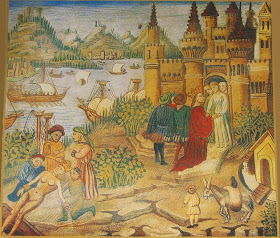Call for applications
From 24 to 30 September 2015
Kunsthistorisches Institut in Florenz – Max-Planck-Institut
"In Tuscany", writes Leon Battista Alberti – evidently not without a touch of pride – in his treatise on architecture, "there are wonderful hospitals that were built for incredible sums." He is not alone in his opinion, for many other writers, thinkers and travellers likewise pay tribute to the activities, facilities and beauty of these charitable institutions, whose functions were so much more wide-ranging than those of the "hospital" as we understand it today. As hospices that cared for the sick and dying, as homes for foundlings, orphans and the poor, and at the same time in their role as administrators of land holdings and financial assets, hospitals were intimately bound up with social and religious life in towns and cities. These institutions shaped the urban structure and the cityscape of Italian municipalities to a degree that is difficult for us to imagine today, and therein reflect the permanent presence of poverty, disease and death in civic life in the Early Modern era.
This year's summer school at the Kunsthistorisches Institut in Florenz aims to approach these broader phenomena by studying the "hospital" as microcosm. It enquires in particular into the role played in these institutions by art as the mediator between poverty and wealth, the healthy and the sick, the soul and the body – in short, between life and death. It is interested firstly in examining in what way the endowment and patronage of hospitals is bound up with the need for spiritual salvation or personal prestige, in other words how it reflects social structures. The lavish architectural design and artistic decoration of many hospitals point, secondly, to fundamental notions and beliefs regarding the impact and (healing) effect of works of visual art. A third area of interest is the eminent socio-historical significance of the institutions for artists of the Early Modern era, who not only held meetings and deepened their knowledge of anatomy here, but also ran their workshops, lived and in some cases even built their burial chapels inside such hospitals.
The summer school is addressed to advanced undergraduates, PhD students and recent postdocs in the sphere of art history or related disciplines. Participants will be expected to deliver presentations. A good passive knowledge of German is required in order to be able to take active part in discussions. The Institute funds the costs of accommodation and reimburses half of actual travel costs. Participants also receive a daily allowance.
Applications should be accompanied by a C.V., a letter of recommendation and if necessary copies of certificates. In the case of undergraduates, we also ask for copies of records of achievement in your main subject. In addition to Florence, excursions are planned to Altopascio, Pistoia, Prato, Rome and Siena, among others. With this schedule in mind, we welcome suggestions from applicants for one to three presentation topics and will endeavour to take wishes into account if possible.
Please send your letter of application and supporting documents to Prof. Alessandro Nova, Kunsthistorisches Institut – Max-Planck-Institut, Via Giuseppe Giusti 44, I – 50121 Florence or dirnova@khi.fi.it (marked "2015 Summer School").
Closing date for applications: 31 March 2015
Aucun commentaire:
Enregistrer un commentaire